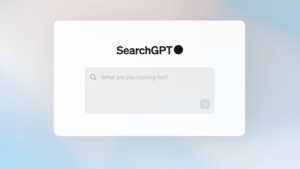Hats off to Paul over at StarkedSF for this tip.
An interesting story ran over at Read / Write Web discussing the market of social bookmarking as well as comparing several leaders in the space – although it doesn’t seem to include RawSugar and FURL , among others.
I’ve recently held discussions with Todd Defren , Shel Holtz , Chris Heuer, and Tom Foremski regarding social bookmarking, individually, as well as on the NMR “New Media Release” Cast, and how it can be leveraged by the PR industry. Todd has also covered this topic over at PR-Squared.
Read / Write Web offers a condensed history of the market to help you quickly get up to speed:
“The current social web era started with del.icio.us and the advent of social bookmarking. The simple concept of a tag has turned our interactions with the web upside down. The idea of being able to store your bookmarks online, share them with everyone and see what others have bookmarked – triggered the sequence of events that resulted in today’s rich and social web ecosystem.”
So, as a PR professional, why should you care about this comparison article? Because it provides a comprehensive set of side-by-side features/benefits that might work better for you in your attempts of getting the news out there and expanding its reach in the context you intended.
Personally, I use del.icio.us, but, that’s just a personal preference. It isn’t by any means, the “be all,” “end all.”
But, as you may have seen at the bottom of blog posts, sometimes, the author provides readers with several options to help them increase the visibility and popularity of the article using the their preferred choice of “saving” and “tagging” for future reference or simply for sharing.
One way PR people can use social bookmarking, is similar to bloggers. Place “quick links” at the end of the press release, and when it appears on the web in the form of SEO (Search Engine Optimization) PR, readers can take the opportunity to bookmark it. Start the process by also placing the news in the most popular sites, bookmarked with the tag words that you think will get the most exposure.
A simple way to do this is, http://del.icio.us/post
Now there’s also another way to use social bookmarking tools for PR, which has been thoroughly documented out there. But, since there are new readers everyday, we just can’t go over this enough. Social bookmarking sites also offer a unique way of creating a resource center for reporters or bloggers, by saving key sites, reports, or user experiences on the web to help sculpt a more desirable story. For those Web-savvy PR folks, yes, we were providing online sites specifically for reporters back in the day, but the difference here, is that you can tag these babies which may also offer greater visibility beyond your intended audience.
Here are a couple of rudimentary examples for the purpose of this article:
http://del.icio.us/Mvox_MV900_cellphone_ban
http://del.icio.us/smpr
Then for you more advanced users, there’s the notion of Tagging : “Crowdsourcing” vs. “Purpose-Built” as covered recently on the NMRCast #7 as well as Defren’s blog. The idea here is that you can provide different mechanisms to bookmark socially, one specifically to sculpt a message and the other simply to get the masses behind a movement and allow them to determine the content.
All this depends on what the reporter, blogger, writer, etc, are looking for and how they want to see it presented – less spin, with more relevance to their audience.
Two such examples are Shel Holtz’s SMNR for SpiralFrog and FutureWorks’ fusion of a press release and SMPR for SwapThing .
Since this stuff is all brand new, it doesn’t hurt to try both and experiment as much as possible. It’s the only way we’ll learn enough to advance this from an art into a science – but with the landscape changing in PR faster than ever, implementation is key.
The article concludes with this observation:
“The social bookmarking market is dominated by del.icio.us and StumbleUpon. These leaders split the market, as they bring orthogonal approaches to bookmarking – del.icio.us builds a hierarchy for people to browse (it does related relationships, etc.), while StumbleUpon is more of a random discovery system.”
Either way, social bookmarking is powerful and definitely changes the landscape, while also presenting new opportunities for and extending the reach of PR.
Tags: sprialfrog, swapthing, readwriteweb, social bookmarking, delicious, del.icio.us, richard mcmanus, starkedsf, shel holtz, forimmediaterelease, chris heuer, futureworks, crowdsourcing, new media, newpr, nmr, press release, pr, pr 2.0, PR2.0, public+relations, sem, smo,, seo,, smpr Social Media social media optimization, Socialmediaclub, todd defren, tom foremski, brian solis, briansolis,








Wow. The numbers are pretty amazing.
Thanks for the post, and tying in the PR implications.
Eric, thanks. I appreciate the feedback!